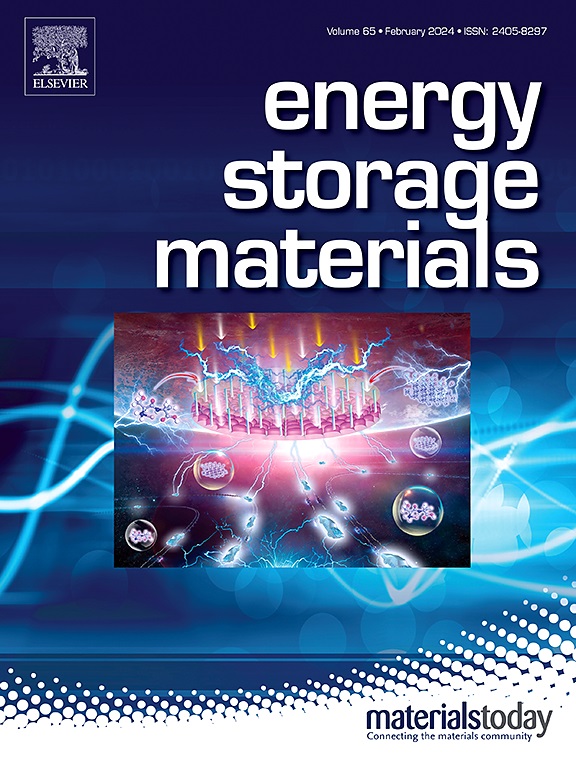水溶液锌-溴电池的最新进展:电化学、挑战与展望
IF 20.2
1区 材料科学
Q1 CHEMISTRY, PHYSICAL
引用次数: 0
摘要
水溶液锌溴电池(AZBBs)由于其高能量密度、高性价比和固有安全性等优点,作为下一代储能技术备受关注。尽管有这些优点,但诸如聚溴离子穿梭效应、自放电和锌阳极不稳定性等挑战阻碍了它们的广泛应用。本文从深入讨论溴氧化还原反应的基本电化学机制和这些系统固有的主要挑战开始,对AZBBs的最新进展进行了全面和系统的研究。随后,它阐明了在电极材料、电解质和分离器的制造和优化方面的最新发展,特别强调了改善现有限制的创新策略。此外,本文还概述了AZBBs发展所面临的挑战和未来的研究方向,包括先进正极材料的设计、电解质优化和器件工程。通过解决这些关键方面,本工作努力为高性能AZBBs的开发提供有价值的见解和指导,为其在大规模储能应用中的实际实施铺平道路。本文章由计算机程序翻译,如有差异,请以英文原文为准。
Recent advances of aqueous zinc-bromine batteries: electrochemistry, challenges and perspectives
Aqueous zinc-bromine batteries (AZBBs) gain considerable attention as a next-generation energy storage technology due to their high energy density, cost-effectiveness and intrinsic safety. Despite these advantages, challenges such as the polybromide ion shuttle effect, self-discharge, and zinc anode instability hinder their widespread applications. This review provides a comprehensive and systematic examination of recent advancements in AZBBs, beginning with an in-depth discussion of the fundamental electrochemical mechanisms underlying bromine redox reactions and the principal challenges inherent to these systems. Subsequently, it elucidates the most recent developments in the fabrication and optimization of electrode materials, electrolytes and separators, with particular emphasis on innovative strategies to ameliorate existing limitations. Furthermore, this article delineates the persisting challenges and prospective research directions for advancing AZBBs, including the design of advanced cathode materials, electrolyte optimization and device engineering. By addressing these critical aspects, this work endeavors to provide valuable insights and guidance for the development of high-performance AZBBs, paving the way for their practical implementation in large-scale energy storage applications.
求助全文
通过发布文献求助,成功后即可免费获取论文全文。
去求助
来源期刊

Energy Storage Materials
Materials Science-General Materials Science
CiteScore
33.00
自引率
5.90%
发文量
652
审稿时长
27 days
期刊介绍:
Energy Storage Materials is a global interdisciplinary journal dedicated to sharing scientific and technological advancements in materials and devices for advanced energy storage and related energy conversion, such as in metal-O2 batteries. The journal features comprehensive research articles, including full papers and short communications, as well as authoritative feature articles and reviews by leading experts in the field.
Energy Storage Materials covers a wide range of topics, including the synthesis, fabrication, structure, properties, performance, and technological applications of energy storage materials. Additionally, the journal explores strategies, policies, and developments in the field of energy storage materials and devices for sustainable energy.
Published papers are selected based on their scientific and technological significance, their ability to provide valuable new knowledge, and their relevance to the international research community.
 求助内容:
求助内容: 应助结果提醒方式:
应助结果提醒方式:


